On a recent sunny winter morning, Huang Yo-chien (黃友謙), one of the few remaining traditional temple painters in the country, was filled with nostalgia as he began painting door gods on the main entrance to the Dongjia Beijhih Temple (東甲北極殿) in the Penghu archipelago.
It was at this centuries-old temple that the 77-year-old painter of temple wall and door decorations began his career 60 years ago, as an apprentice to his artisan father.
The temple in the Dongjia District (東甲) of Magong (馬公), Penghu County’s capital, was undergoing a major renovation at the time and his father, Huang Wen-hua (黃文華), was in charge of the temple’s decorations, including paintings and carvings.
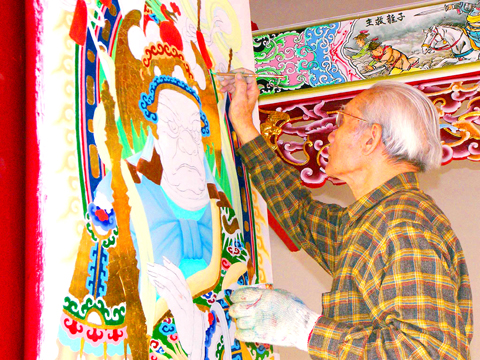
PHOTO: CNA
Six decades later, Huang Yo-chien is doing the same work as his father — painting door gods on the temple’s main entrance and refreshing the colors of its paintings — but there are few left to carry on this highly respected traditional art form that painters like Huang have seen as a way of respecting local gods.
Driven by pressures to earn more money and complete jobs quickly, fewer young people are entering the profession, even if the nation’s 11,651 temples are still important places in Taiwanese society.
The art of temple painting was once learned through patience and years of practice, said Chiang Shao-ying (江韶瑩), a professor at Taipei National University of the Arts.
But the current business environment deters the meticulous learning of the craft, as temple paintings and decorations have become just another component in bids for complete temple construction projects.
With project budgets cut to the bone, contractors often allocate only a tiny share of the overall budget to the paintings, leaving artisans unwilling to do the painstaking work of their predecessors, Chiang said.
Temple painters were once relatively well paid compared with other professions, but nowadays they are likely to earn only NT$200,000 to NT$300,000 per project, which normally takes weeks or even months to complete.
The lower budgets have also spurred changes in temple decoration techniques that have discouraged the cultivation of temple artists.
Over the past decade, nearly all newly built temples in Taiwan have been adorned with bas reliefs, with door gods cut into the surface of their wooden gates by machines rather than being painted, shortening construction time and saving touch-up costs.
As the nature of the business and the work has changed, so has the attitude of some painters. While once truly devoted to their profession and seeing themselves as fulfilling a commitment to the gods, many today are mere contractors without any spiritual or emotional attachment to the job they have been hired to do.
That attachment compelled masters of the trade like Huang Yo-chien and his father to take an uncompromising approach to their work, but Huang also credits his father’s open-mindedness for his artistic development.
“He allowed his apprentices to develop innovative painting skills and foster their own styles, “ Huang Yo-chien said.
His father, he said, accepted his experimentation with Western oil painting and incorporating oil painting techniques into temple painting, innovative techniques that enabled him to stand out and start a new trend in the field.
Now considered one of the nation’s most renowned door god painters, Huang Yo-chien’s works can be seen throughout Taiwan, including at Sanfu Wangye Temple (三府王爺) in Keelung’s Hepingdao (和平島) and Yitien Temple (義天宮) in Sanchung (三重), Taipei County.
But his main body of work is in Penghu, which boasts the nation’s highest temple density.
At least 70 percent of Penghu’s roughly 200 temples are decorated with his character paintings.
The most difficult part of temple painting is painting the facial expressions of the door gods, whose role is to protect the temple and its worshipers from evil spirits.
“If your master dares to allow you to paint a door god’s face, it means that your professional skills have reached a level of maturity and that your apprenticeship may come to an end,” he said.
Wang Wen-liang, a fine arts teacher at Magong Senior High School who is versed in Penghu’s temple art development, said Huang Yo-chien is a master at capturing door gods’ facial expressions, the eyes in particular.
Huang regrets that the temple painting profession is fading fast in Taiwan, especially as there is nobody to follow in his footsteps.
Huang says age has caught up with him and the Dongjia Beijhih Temple door gods will be his last work.
“I’ll retire when it is completed,” said Huang, who estimates he has painted more than 150 temples over his six-decade career.
It is a fitting final assignment for Huang, as his career started and will end at one of the nation’s oldest temples that bears witness to the long history and development of the art form.
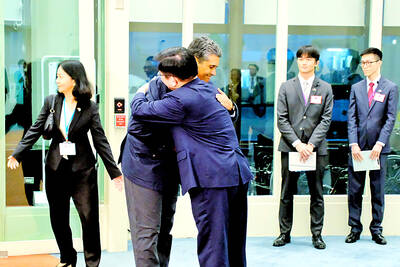
Palauan President Surangel Whipps Jr arrived in Taiwan last night to kick off his first visit to the country since beginning his second term earlier this year. After arriving at Taoyuan International Airport at around 6:30 pm, Whipps and his delegation were welcomed by Minister of Foreign Affairs Lin Chia-lung (林佳龍). Speaking to gathered media, the Palauan leader said he was excited and honored to be back in Taiwan on his first state visit to Taiwan since he was sworn in this January. Among those traveling with Whipps is Minister of State Gustav N. Aitaro, Public Infrastructure
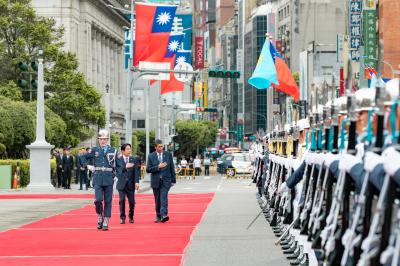
President William Lai (賴清德) yesterday thanked Palau for its continued support of Taiwan's international participation, as Taipei was once again excluded from the World Health Assembly (WHA) currently taking place in Switzerland. "Palau has never stopped voicing support for Taiwan" in the UN General Assembly, the WHO and other UN-affiliated agencies, Lai said during a bilateral meeting with visiting Palau President Surangel Whipps Jr. "We have been profoundly touched by these endorsements," Lai said, praising the Pacific island nation's firm support as "courageous." Lai's remarks came as Taiwan was excluded for the ninth consecutive year from the WHA, which is being held in
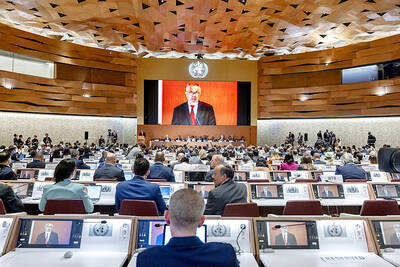
RESOLUTIONS DEBATE: Taiwan’s allies said that UN and WHA resolutions cited by China and other nations ‘do not determine Taiwan’s participation in WHO activities’ A proposal to invite Taiwan to this year’s World Health Assembly (WHA) was rejected on Monday, resulting in Taipei’s absence from the annual meeting for a ninth consecutive year, although partners spoke up for Taiwan’s participation at the first day of the meeting. The first agenda item after the opening was a “two-on-two debate” on a proposal to invite Taiwan to participate at the WHA as an observer. Similar to previous years, two countries made statements in favor of the proposal, while two others expressed their opposition. Philippine Secretary of Health Teodoro Herbosa, president of the 78th WHA, accepted the WHA General Committee’s
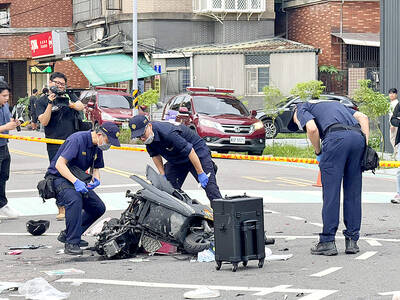
At least three people died and more than a dozen were injured yesterday afternoon when a vehicle struck a group of pedestrians in New Taipei City’s Sansia District (三峽). The incident happened at about 4pm when a car rammed into pedestrians at an intersection near Bei Da Elementary School. Witnesses said the sedan, being driven at a high speed, ran a red light, knocking scooters out of the way and hitting students crossing the road before careening into a median near the intersection of Guocheng and Guoguang streets. The incident resulted in three deaths and 13 injuries, including the driver, a 78-year-old man